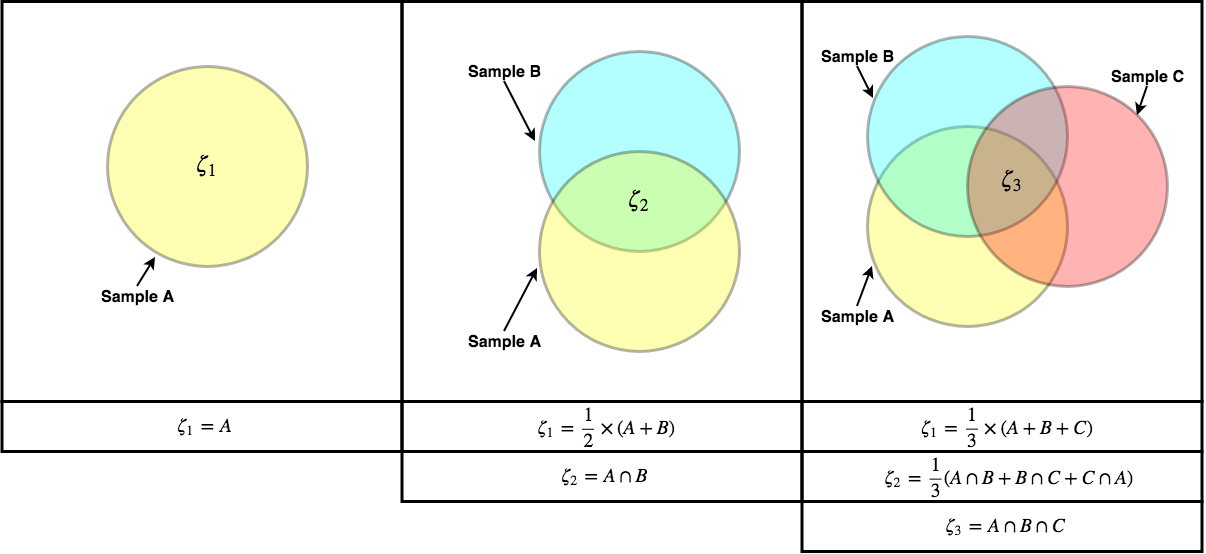|
Alpha Diversity
In ecology, alpha diversity (α-diversity) is the mean species diversity in a site at a local scale. The term was introduced by R. H. WhittakerWhittaker, R. H. (1960) Vegetation of the Siskiyou Mountains, Oregon and California. Ecological Monographs, 30, 279–338. Whittaker, R. H. (1972). Evolution and Measurement of Species Diversity. Taxon, 21, 213-251. together with the terms beta diversity (β-diversity) and gamma diversity (γ-diversity). Whittaker's idea was that the total species diversity in a landscape (gamma diversity) is determined by two different things, the mean species diversity in sites at a more local scale (alpha diversity) and the differentiation among those sites (beta diversity). Scale considerations Both the area or landscape of interest and the sites within it may be of very different sizes in different situations, and no consensus has been reached on what spatial scales are appropriate to quantify alpha diversity. It has therefore been proposed that the ... [...More Info...] [...Related Items...] OR: [Wikipedia] [Google] [Baidu] |
Ecology
Ecology () is the natural science of the relationships among living organisms and their Natural environment, environment. Ecology considers organisms at the individual, population, community (ecology), community, ecosystem, and biosphere levels. Ecology overlaps with the closely related sciences of biogeography, evolutionary biology, genetics, ethology, and natural history. Ecology is a branch of biology, and is the study of abundance (ecology), abundance, biomass (ecology), biomass, and distribution of organisms in the context of the environment. It encompasses life processes, interactions, and adaptations; movement of materials and energy through living communities; ecological succession, successional development of ecosystems; cooperation, competition, and predation within and between species; and patterns of biodiversity and its effect on ecosystem processes. Ecology has practical applications in fields such as conservation biology, wetland management, natural resource m ... [...More Info...] [...Related Items...] OR: [Wikipedia] [Google] [Baidu] |
Generalized Mean
In mathematics, generalised means (or power mean or Hölder mean from Otto Hölder) are a family of functions for aggregating sets of numbers. These include as special cases the Pythagorean means (arithmetic mean, arithmetic, geometric mean, geometric, and harmonic mean, harmonic means). Definition If is a non-zero real number, and x_1, \dots, x_n are positive real numbers, then the generalized mean or power mean with exponent of these positive real numbers is M_p(x_1,\dots,x_n) = \left( \frac \sum_^n x_i^p \right)^ . (See Norm (mathematics)#p-norm, -norm). For we set it equal to the geometric mean (which is the limit of means with exponents approaching zero, as proved below): M_0(x_1, \dots, x_n) = \left(\prod_^n x_i\right)^ . Furthermore, for a sequence of positive weights we define the weighted power mean as M_p(x_1,\dots,x_n) = \left(\frac \right)^ and when , it is equal to the weighted geometric mean: M_0(x_1,\dots,x_n) = \left(\prod_^n x_i^\right)^ . The unweight ... [...More Info...] [...Related Items...] OR: [Wikipedia] [Google] [Baidu] |
Biodiversity
Biodiversity is the variability of life, life on Earth. It can be measured on various levels. There is for example genetic variability, species diversity, ecosystem diversity and Phylogenetics, phylogenetic diversity. Diversity is not distributed evenly on Earth. It is greater in the tropics as a result of the warm climate and high primary productivity in the region near the equator. Tropical forest ecosystems cover less than one-fifth of Earth's terrestrial area and contain about 50% of the world's species. There are latitudinal gradients in species diversity for both marine and terrestrial taxa. Since Abiogenesis, life began on Earth, six major mass extinctions and several minor events have led to large and sudden drops in biodiversity. The Phanerozoic aeon (the last 540 million years) marked a rapid growth in biodiversity via the Cambrian explosion. In this period, the majority of Multicellular organism, multicellular Phylum, phyla first appeared. The next 400 mil ... [...More Info...] [...Related Items...] OR: [Wikipedia] [Google] [Baidu] |
University Of Wisconsin–Stevens Point
The University of Wisconsin–Stevens Point (UW–Stevens Point or UWSP) is a public university in Stevens Point, Wisconsin, United States. Established in 1894, it is part of the University of Wisconsin System. UW-Stevens Point grants associate, baccalaureate, and master's degrees, as well as doctoral degrees in audiology, educational sustainability, and physical therapy. The main campus includes the Schmeeckle Reserve, 15 academic buildings, and 13 residence halls. UWSP also has two branch campuses located in Wausau and Marshfield. UW-Stevens Point is organized into four colleges with more than 170 undergraduate programs in 80 majors and 90 minors and 18 graduate programs. UW-Stevens Point has a long history of pioneering new educational fields. UWSP was one of the first schools in the US to educate young women in “domestic science” or home economics, the first university in the US to offer a major in environmental conservation, and the first in the world to offer w ... [...More Info...] [...Related Items...] OR: [Wikipedia] [Google] [Baidu] |
Phylogenetic Diversity
Phylogenetic diversity is a measure of biodiversity which incorporates Phylogenetics, phylogenetic difference between species. It is defined and calculated as "the sum of the lengths of all those branches that are members of the corresponding minimum spanning path", in which 'branch' is a segment of a cladogram, and the minimum spanning path is the minimum distance between the two nodes. This definition is distinct from earlier measures which attempted to incorporate phylogenetic diversity into conservation planning, such as the measure of 'taxic diversity' introduced by Vane-Wright, Humphries, and William. The concept of phylogenetic diversity has been rapidly adopted in conservation planning, with programs such as the Zoological Society of London's EDGE of Existence programme focused on evolutionary distinct species. Similarly, the World Wide Fund for Nature, WWF's Global 200 also includes unusual evolutionary phenomena in their criteria for selecting target ecoregions. Some studi ... [...More Info...] [...Related Items...] OR: [Wikipedia] [Google] [Baidu] |
Measurement Of Biodiversity
A variety of objective means exist to empirically measure biodiversity. Each measure relates to a particular use of the data, and is likely to be associated with the variety of genes. Biodiversity is commonly measured in terms of taxonomic richness of a geographic area over a time interval. In order to calculate biodiversity, species evenness, species richness, and species diversity are to be obtained first. ''Species evenness'' is the relative number of individuals of each species in a given area. ''Species richness'' is the number of species present in a given area. ''Species diversity'' is the relationship between species evenness and species richness. There are many ways to measure biodiversity within a given ecosystem. However, the two most popular are Shannon-Weaver diversity index, commonly referred to as Shannon diversity index, and the other is Simpsons diversity index. Although many scientists prefer to use Shannon's diversity index simply because it takes into account sp ... [...More Info...] [...Related Items...] OR: [Wikipedia] [Google] [Baidu] |
Global Biodiversity
Global biodiversity is the measure of biodiversity on planet Earth and is defined as the total variability of life forms. More than 99 percent of all species that ever lived on Earth are estimated to be extinct. Estimates on the number of Earth's current species range from 2 million to 1 trillion, but most estimates are around 11 million species or fewer. About 1.74 million species were databased as of 2018, and over 80 percent have not yet been described. The total amount of DNA base pairs on Earth, as a possible approximation of global biodiversity, is estimated at 5.0 x 1037, and weighs 50 billion tonnes. In comparison, the total mass of the biosphere has been estimated to be as much as 4 TtC (trillion tons of carbon). In other related studies, around 1.9 million extant species are believed to have been described currently, but some scientists believe 20% are synonyms, reducing the total valid described species to 1.5 million. In 2013, a study published in Science estimated the ... [...More Info...] [...Related Items...] OR: [Wikipedia] [Google] [Baidu] |
Zeta Diversity
In ecology, zeta diversity (ζ-diversity), first described in 2014, measures the degree of overlap in the type of taxa present between a set of observed communities. It was developed to provide a more generalized framework for describing various measures of diversity, and can also be used to test various hypotheses pertaining to biogeography. Zeta diversity as an extension of other measures of diversity α-diversity The most basic measure of community diversity, alpha diversity (α-diversity), can be described as the average number of distinct taxonomic groups (e.g. unique genera or operational taxonomic unit) present, independent of their abundances, on a per sample basis. In the ζ-diversity framework this can be described as ζ1, the number of unique taxa present in one sample. β-diversity Beta diversity In ecology, beta diversity (β-diversity or true beta diversity) is the ratio between regional and local species diversity. The term was introduced by Robert Whittaker ( ... [...More Info...] [...Related Items...] OR: [Wikipedia] [Google] [Baidu] |
Gamma Diversity
In ecology, gamma diversity (γ-diversity) is the total species diversity in a landscape. The term was introduced by R. H. WhittakerWhittaker, R. H. (1960) Vegetation of the Siskiyou Mountains, Oregon and California. Ecological Monographs, 30, 279–338. together with the terms alpha diversity (α-diversity) and beta diversity (β-diversity). Whittaker's idea was that the total species diversity in a landscape (γ) is determined by two different things, the mean species diversity in sites at a more local scale (α) and the differentiation among those sites (β). According to this reasoning, alpha diversity and beta diversity constitute independent components of gamma diversity: γ = α × β : Scale considerations The area or landscape of interest may be of very different sizes in different situations, and no consensus has been reached on what spatial scales are appropriate to quantify gamma diversity. It has therefore been proposed that the definition of gamma diversity does ... [...More Info...] [...Related Items...] OR: [Wikipedia] [Google] [Baidu] |
Dark Diversity
Dark diversity is the set of species that are absent from a study site but present in the surrounding region and potentially able to inhabit particular ecological conditions. It can be determined based on species distribution, dispersal potential and ecological needs. The term was introduced in 2011 by three researchers from the University of Tartu and was inspired by the idea of dark matter in physics since dark diversity too cannot be directly observed. Overview Dark diversity is part of the species pool concept. A species pool is defined as set of all species that are able to inhabit a particular site and that are present in the surrounding region or landscape. Dark diversity comprises species that belong to a particular species pool but that are not currently present at a site. Dark diversity is related to "habitat-specific" or "filtered" species pool which only includes species that can both disperse to and potentially inhabit the study site. For example, if fish diversit ... [...More Info...] [...Related Items...] OR: [Wikipedia] [Google] [Baidu] |
Beta Diversity
In ecology, beta diversity (β-diversity or true beta diversity) is the ratio between regional and local species diversity. The term was introduced by Robert Whittaker (ecologist), R. H. Whittaker together with the terms alpha diversity (α-diversity) and gamma diversity (γ-diversity). The idea was that the total species diversity in a landscape (γ) is determined by two different things: the mean species diversity at the local level (α) and the differentiation among local sites (β). Other formulations for beta diversity include "absolute species turnover", "Whittaker's species turnover" and "proportional species turnover". Whittaker proposed several ways of quantifying differentiation, and subsequent generations of ecologists have invented more. As a result, there are now many defined types of beta diversity. Some use ''beta diversity'' to refer to any of several indices related to compositional heterogeneity. Confusion is avoided by using distinct names for other formulations.T ... [...More Info...] [...Related Items...] OR: [Wikipedia] [Google] [Baidu] |




